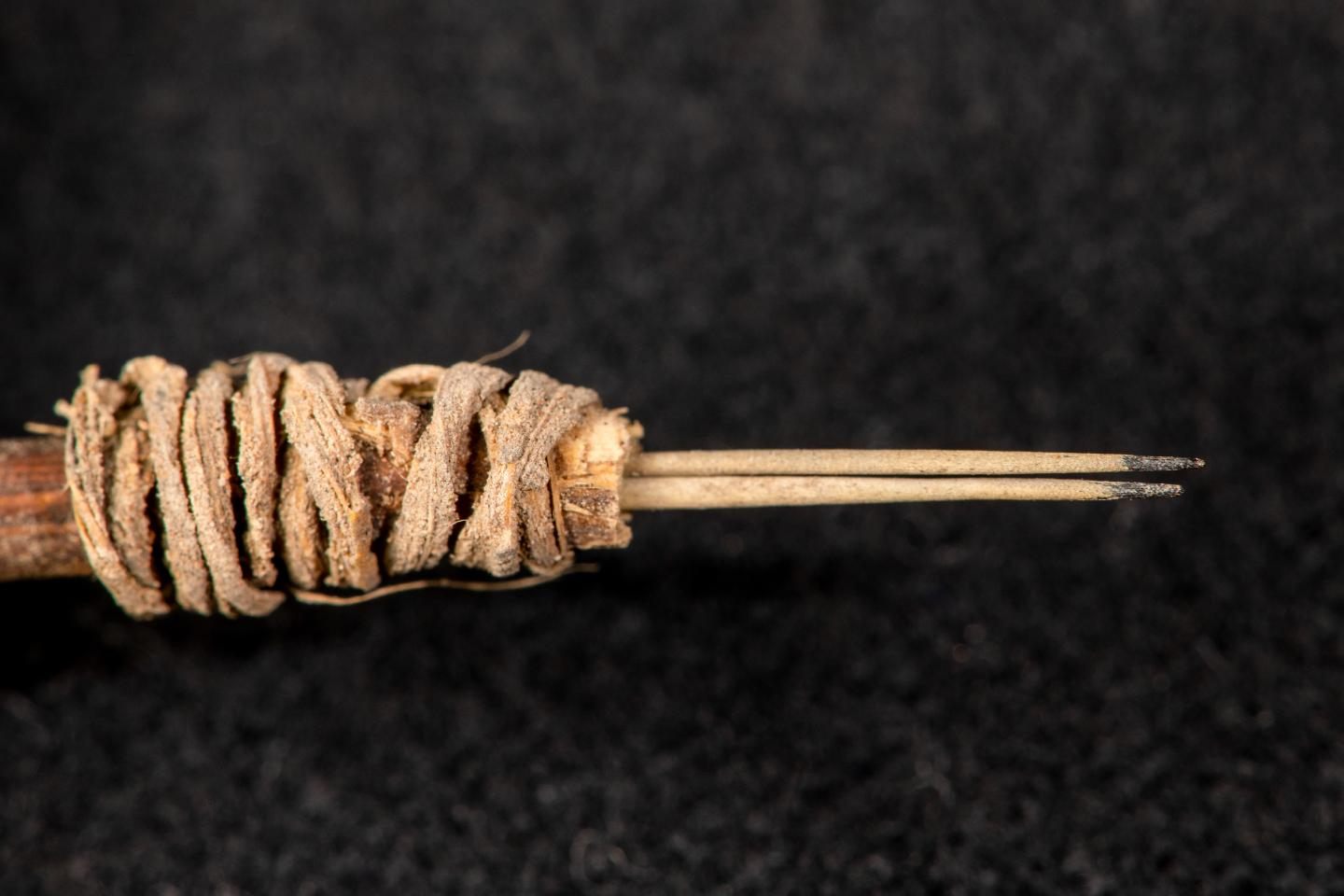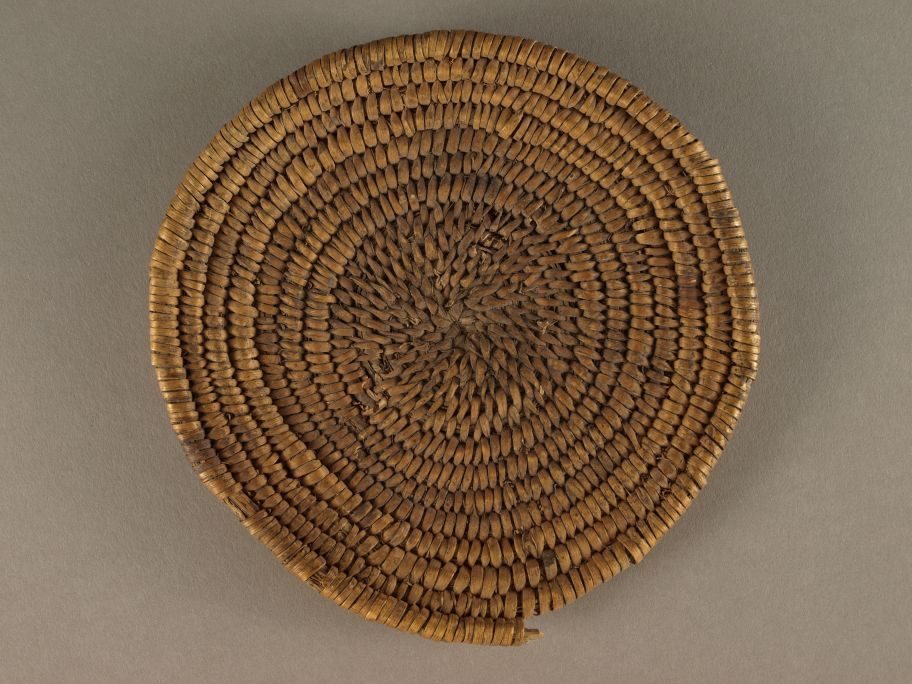Found: The Oldest Tattoo Needles in Western North America
They could sharpen our understanding of Pueblo prehistory.

Sometimes, hoarding pays off. That’s one of the lessons in the discovery of western North America’s oldest known tattooing instrument, recently identified after spending more than 40 years in storage.
Andrew Gillreath-Brown, a Ph.D. candidate in anthropology at Washington State University, was taking a routine inventory of stowed archaeological items in July 2017 when he found the tiny tool: a 3.5-inch-long skunkbush handle with two sharp, thin cactus spines extending from the top, each dipped in black ink. Those ink stains stood out to Gillreath-Brown, himself a tattoo aficionado, and he conducted a series of experiments to confirm whether this was indeed a tattoo implement and to assess how old it was. He and his co-authors published their findings today in the Journal of Archaeological Science: Reports.
Before Gillreath-Brown located this particular item, the oldest identified tattooing tools from the region were dated to sometime between the years 1100 and 1280, in present-day Arizona and New Mexico. So the “new” tool, which was found in 1972 in what is now southeastern Utah, pushes the archaeological record back by more than 1,000 years, and confirms that the Ancestral Pueblo people practiced tattooing during the Basketmaker II period. “Tattooing by prehistoric people in the Southwest is not talked about much because there has not ever been any direct evidence to substantiate it,” said Gillreath-Brown in a press release. That all changes now.

To confirm that the tool was, indeed, used for tattooing, Gillreath-Brown analyzed the tips using an electron microscope and techniques involving X-ray fluorescence and energy dispersive ray spectroscopy. The tests indicated the likely presence of carbon, which is often seen in tattoo ink. But just to cover all his bases, Gillreath-Brown even took a replica of the instrument and used it to tattoo pig skin.
The Ancestral Pueblo people lived in areas now including parts of the Four Corners states: Arizona, New Mexico, Colorado, and Utah. Their descendants live today in tribes such as the Hopi, Zuni, Acoma, and Laguna. The early periods of Pueblo history are divided into different “Basketmaker” eras because archaeologists commonly uncover impressive baskets and other woven items at Pueblo sites. Gillreath-Brown says he is hopeful that the finding could have broader implications for future sociological studies of the ancient Pueblo people, who may have used tattoos to differentiate between tribes as humans became more sedentary and different tribes began living among one another.










Follow us on Twitter to get the latest on the world's hidden wonders.
Like us on Facebook to get the latest on the world's hidden wonders.
Follow us on Twitter Like us on Facebook